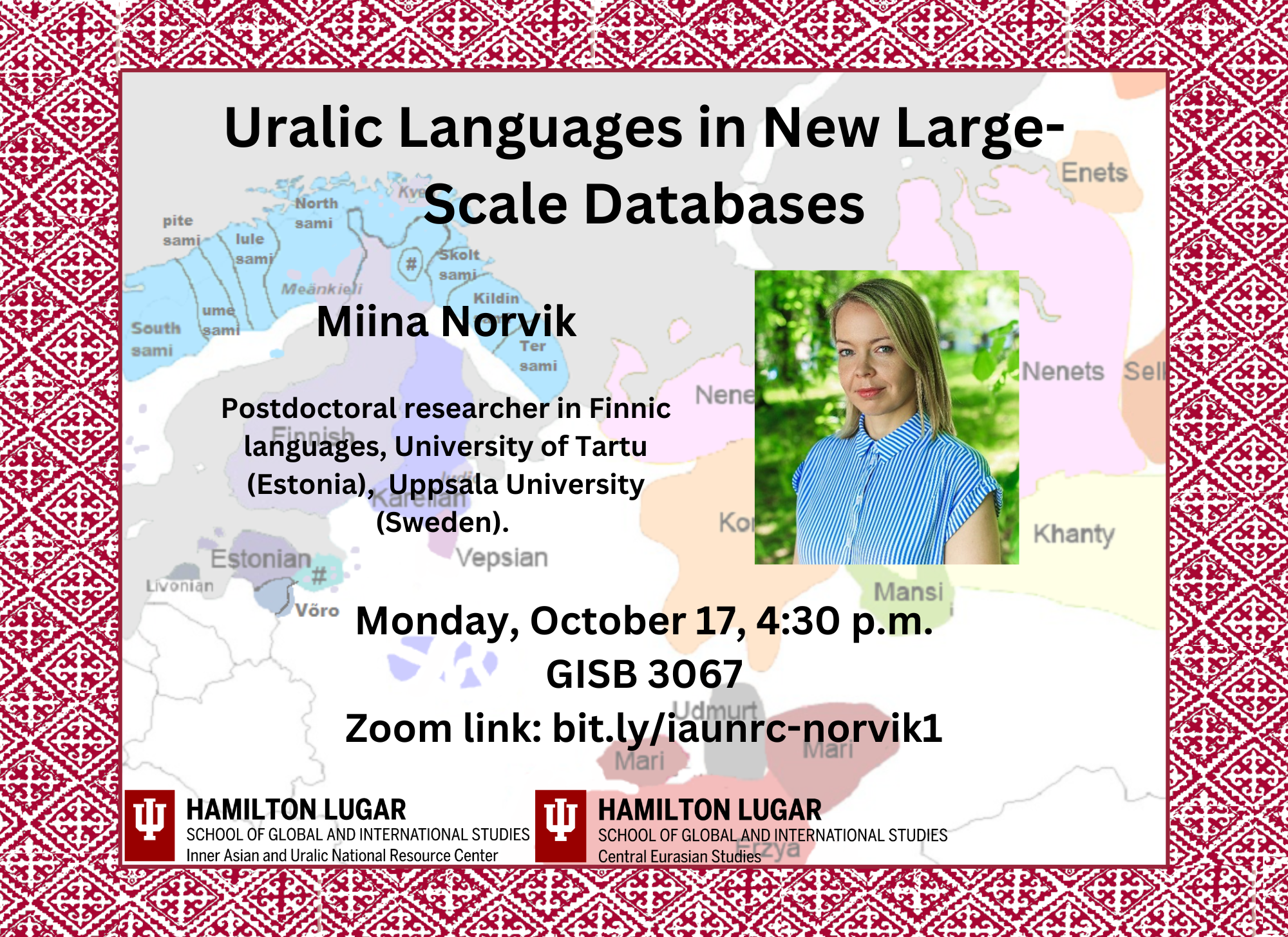On October 17, Dr. Miina Norvik joined the IAUNRC for a lecture on her ongoing research project titled “Uralic Languages in New Large-Scale Databases.” She started the lecture noting that the project is comprised of two databases, Grambank and UraTyp, which were based on previous attempts to create a database of Uralic languages. Some of the data they found was based on the analyses of collected data earlier on. The previous attempt by Wolfgang Veenker to create a Uralic language database in the 1980s didn’t take off due to the obstacles created by the USSR. There was also an attempt to create a typology database of Ugric languages, which failed. Much of the data used in the databases were based on her and her colleagues’ research, primarily in the Russian Federation. At the time of writing, there were more than 40 dialects and languages represented, but she and her research group want to represent more than that onto the map. She noted that Finnish and Hungarian are overrepresented because of greater availability of those languages. At the time of the lecture, Grambank was closed because people want to publish articles first before their work is released. It should be released in 2023.
UraTyp 1.0 is the online form of the database. Miina and a colleague worked on coding 35 Uralic languages, however some of these languages don’t make it because there is not enough knowledge in the Anglophone world. She marked the distribution of 350 structural features in UraTyp, with 1 or 0, if it was positive or negative.
Miina mentioned that she and colleagues published an article on how Uralic languages cluster by their typological diversity They found differences between phonology, morphology, and syntax. She has also sought to compare the database to neighboring non-Uralic languages, which would help explain why differences exist. Features regarded as being characteristic of one group of languages do not necessarily characterize the entire group, such having many cases, which is not true of Livonian.
Grambank generalizes the data, but syntax and morphology helped to break them up into their respective geographical areas. The east versus west distinction makes this more obvious. Issues also arise when addressing which dialect (high prestige, official status, and literary standard) or if there is even a written standard of the language. Other considerations are whether the language or dialect is no longer commonly spoken or if it has gone extinct. This puts into question how a researcher can deal with variation and how to think in discrete categories. However, having this bank makes structural and lexical data available in one place.
In the future, Miina would like to add more dialectal data and add more features (like a micro-areal analysis). In her prior research, she would consult with people who did research on the language and then would sometimes be invited to someone’s home. Grambank, however, did not do interviews, which is why it is very basic, whereas Miina’s work is more research focused.
Miina Norvik (PhD) is a Researcher in the Finnic languages at the University of Tartu (Estonia) and a postdoctoral researcher at the Uppsala University (Sweden). Her research mainly focuses on structural features of the minor Finnic languages (e.g., Livonian, South Estonian, Veps, Karelian, Ludian) and their main contact languages. In her studies, she has also used her own data collected during several fieldwork trips to the Finnic-speaking areas in Russia. Since 2013, among other courses, she has been teaching Livonian at the University of Tartu and in the Livonian Summer Universities taking place at the Livonian Coast (Latvia). Miina Norvik is also a member of two interdisciplinary research teams – BEDLAN (Biological Evolution and Diversification of LANguages), based at the University of Turku (Finland), and The Collegium for Transdisciplinary Studies in Archaeology, Genetics and Linguistics, (University of Tartu).


